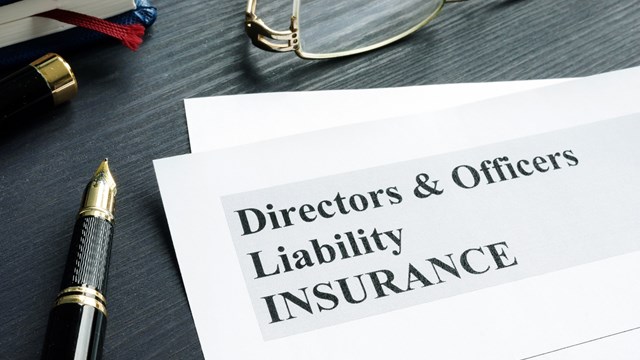
It seems like the everyday operating expenses of condos and HOAs just keep going up and up—fuel costs, staff salaries, physical repairs and the cost of cleaning supplies and other materials have all crept up (or shot up) in the last couple of years. But what about the cost of insurance coverage? Has it edged upward along with everything else? In this article, we’ll attempt to find out.
Multiple Factors
Co-ops and condo associations typically buy a variety of insurance policies. These can include general liability, umbrella liability, property, equipment breakdown, workers’ compensation, directors and officers, professional liability, and disability benefits law coverage, to name just a few.
The experts who were interviewed for this article concur that on a long-term basis, insurance premiums have indeed risen—a spike in rates was especially noticeable after 9/11. During the past few years, however, the market has become “soft” and premiums have actually gone down.
Several explanations are given for this phenomenon.
“It’s basically due to increased profitability from the carrier side over the past few years,” says Michael D’Altrui of Conover Beyer Associates Insurance in Manasquan. “To increase competitions and to gain new accounts…companies drop prices. It’s just part of the ebb and flow of the market.”
Gary C. Rygiel, vice president of Liberty Insurance Associates in Millstone Township, who is also the president of Professional Insurance Agents of New Jersey (PIA-NJ), says that nowadays, “You have two or three specialty markets vying for business, and all are basically adding coverage enhancement.”
Andy Anderson, executive vice president, of the Anderson Insurance Agency in Manahawkin and a past president of PIA-NJ, elaborates on the same point. “Insurance companies,” he says, “often change the product they offer based on competitive pressure. For example, if one company offers coverage for machinery virtually free of charge, a second company says, ‘We have to offer machinery, too. We’ll do one better—we’ll cover electronic items as well.’”
Don’t grow too secure, however. The same companies may often take away some coverage—for mold, to name a common example. One thing to remember is that it’s driven by the loss history and the needs of the carrier, not of the association.
Have all types of insurance been going down? Once again, that depends on who you ask. Ed King, president of E.A. King Inc. in Allenhurst, says that in his experience, property and liability insurance are where the bulk of the drop in rates has been seen in the condo and co-op market.
Anderson adds that directors and officers’ insurance is the exception—not because of anything to do with condo and co-op boards, but because of events surrounding boards in the business world in general—“events like Enron, Arthur Anderson and the subprime mortgage crisis.”
So, even though co-op and condo boards have nothing to do with these unscrupulous enterprises, “that line of business” has to generate more business to take care of its losses—whether it’s for a condo, a co-op or a hospital.
Going Coastal
It should be pointed out that there are also some geographical areas that aren’t seeing the kind of rate reductions that other areas are seeing. Foremost in this category are areas near the coast.
And what is the coast? Not necessarily the coastline per se—some carriers draw a line three miles from the coastline, others draw the line five miles from the coast itself, and some even may charge higher rates anywhere east of the Garden State Parkway!
“The industry is convinced that New Jersey will be hit by a Category 4 storm, and that they should underwrite and create surplus in anticipation of a storm of that magnitude,” says D’Altrui. “Some companies are canceling existing [residential] policies. I don’t know if this is happening in the co-op and condo market, but I have seen some companies exit the co-op and condo marketplace because they thought they couldn’t make money based on these new catastrophe models.”
Thankfully, adds D’Altrui, some insurers will give buildings near the coast a break depending on the type of construction. “Some companies won’t insure houses five miles from the coast, but if buildings are made of masonry and non-combustible, then they’ll draw the line at only one mile from the coast.”
Insurance on the coast aside, if rates have been going down, why do so many associations feel like they’re paying more?
Even if the rate of insurance isn’t higher, many associations, because of changing requirements and more building improvements, find themselves buying more insurance. Nowadays, says Anderson, “You have to put in impact-resistant windows, a different kind of roof, and more.”
Developments, comments D’Altrui, may find themselves facing “hurricane or wind deductibles that they did not have previously. This can be reflected in a percentage—you may have a $1,000 deductible for fire, but one or two percent for wind damage. If the property is worth $20 million, that one or two percent turns out to be more substantial.”
Replacement Costs
Another related cost that has skyrocketed is that of replacement costs. As odd as this may seem to some readers, experts concur that one of the reasons for this is that so many construction materials are tied up in areas where massive reconstruction has been taking place—for example, New Orleans after Katrina, Iraq because of the war, and nowadays, flood-damaged areas such as Iowa.
Not only are materials being grabbed up, but the contractors are flocking to these areas, too.
And the further away the materials are, the greater their transportation costs will be in the event of a disaster that destroys your building. “If I can’t buy plywood locally,” says Rygiel, “it will cost more to get it.” All in all, he says, “After Katrina, it was the worst. Now, it’s down a little bit more, but some contractors went out of town and found work in Iowa.”
If you’re a condo, HOA or co-op manager or board member, much of this may sound like fantasyland to you. After all, what are the odds that your building or buildings will be destroyed by catastrophic fire, floods, explosions and so forth? Still, many carriers insist that associations carry 100 percent value of replacement cost insurance—and if not 100 percent, then 80 or 90 percent.
Keeping Payments Down
What can associations do to keep their insurance payments down? Well, almost everyone agrees, they should make sure that their house is in order (no pun intended)—that there are no trip-and-fall hazards on the grounds, that the plumbing, heating and cooling systems and smoke detectors are up to date, and so on.
“If you have a building with an old roof,” says Anderson, “many insurance companies aren’t anxious to give you a reduction. If you have a new roof and updated heating and plumbing, it will be more attractive to insurers.”
Sometimes, he says, you have to do a cost-benefit analysis. “For example,” he says, “in a wooden building, you might consider a sprinkler system.” Yes, in some places, they’re still not required.
“For the normal building in a city,” adds Rygiel, “make sure it’s maintained, that loose railings or broken stairs are taken care of, that fire escapes are clear. For buildings in coastal areas, mitigation is the big word—put up storm shutters, make sure there is no loose furniture outside, make sure there are hurricane straps on the roof and no loose tiles.”
King recommends a certified property appraisal every few years. It can make a difference in what you’re paying—for example, a replacement cost of $1 million instead of $10 million.
Housekeeping isn’t the only way to keep insurance costs down. One example, given by D’Altrui, is that “certain carriers will give you a large discount on liability if your members sign a waiver of not suing the association, aside from general safety and upkeep.”
More commonly, professionals urge board members and managers to shop around; to approach different brokers or agents, not only one; to have their policies reviewed on a regular basis.
If companies know you’re shopping around, D’Altrui adds, “Everyone is going to sharpen their pencils and make sure that you can get the best rates.” Anderson also mentions a higher property deductible as a way to keep costs down.
Buying in Bulk
Finally, do buildings or associations with similar risk profiles ever band together in a group and buy insurance in bulk to save on costs?
Rarely, say professionals. Two buildings may be very similar, but what if that changes—if one, for example, puts in a pool and the other doesn’t. What’s important to one association may not be important to another. Also, there could be 100 risk factors, not all of which are apparent to board members and managers.
Finally, what happens if one building develops a bad risk profile? In this scenario, that building could hurt a building with a good risk profile that is part of the same group.
Still, if one property manager represents many associations or buildings, that can give him greater bargaining power when he or she negotiates insurance policies.
Raanan Geberer is a freelance writer and editor living in New York City.






Leave a Comment